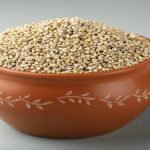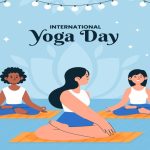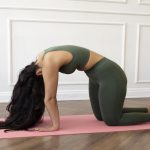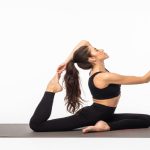Emerging from its root in ancient India, yoga has been practiced for thousands of years and embraced globally. In this modern era yoga asana has gained immense popularity across the world due to its positive impact on overall health. Yoga is a fusion of mental and physical exercises. It is primarily about attaining smooth coordination of mind, body and soul. Practicing yoga poses, known as yoga asana, aids in stretching, strengthening, and balancing of your body, along with cultivating inner awareness and calmness. Yoga postures are not only about body’s flexibility and strength, they assist in being mindful and sustain peace inside. As stated by Baba Ramdev, a renowned yoga guru, “Yoga is the art of living life, not just an exercise routine. It connects the body, mind, and soul to achieve inner peace and holistic well-being.”
As a beginner ,always pay attention to your body’s signals and proceed at your own pace. Adjust yoga poses according to your needs and comfort. No matter you’re just a beginner or have years of experience with yoga poses, there is always something new to explore and learn in the world of yoga asana. One of the fantastic feature of yoga poses is its reachable to everyone, irrespective of age, fitness level and background.
So, lay out your yoga mat and start this journey of self-exploration, improvement and well-being. Here, we have mentioned few yoga poses for beginners and the benefits they bring when included in your daily routine.
Health benefits of yoga
Yoga offers numerous health benefits, both physical and mental. As stated by Kareena Kapoor Khan “Yoga is not just a workout, it’s about working on yourself.” Through various yoga poses individual can improve flexibility, strength and balance to support physical health. Yoga asanas stretch and contract muscles, which enhance circulation and eliminates toxins from the body. Furthermore, yoga poses enhance immune function, and helps prevent disease like asthma and chronic pain.
Additionally, yoga practice aids in weight loss by improving metabolic function and promoting healthy eating patterns. Yoga asanas help minimize cholesterol level and blood pressure in the body thereby promoting cardiovascular health.
Beyond physical health yoga has significant impact on mental health. Yoga asanas are known for their stress-relieving features. Conscious breathing practice and meditation help soothe the mind, improving concentration and clarity and reducing anxiety, ultimately promoting emotional well being and calmness. Yoga postures also help fight depression, stabilize mood swings and improve sleep quality.
These beneficial properties of yoga asana makes it an excellent choice for those looking for growth and self improvement.
Best yoga postures for beginners
There are various types of yoga postures and beginners must opt for the one they are comfortable practicing. Many basic yoga asanas feels familiar when you begin your yoga journey because our bodies easily bend and fold into these positions. It is always advised to embark your yoga journey with basic yoga asanas, use a comfortable yoga mat and locate a peaceful space. Yoga mat offers support during your practice. Yoga for beginners can be commenced with Tree pose, Triangle Pose, Downward Dog, and Cat-Cow pose. In each yoga posture Concentrate on your breathing patterns for best results, inhale deeply and exhaling slowly. Yoga postures are practices for healthy body and mind, prioritize listening to your body’s limits. Take your time to learn each yoga pose slowly with ease. Here are 10 yoga asanas for you to start as a beginner.

Pranayama
It is a seated pose yoga asana all about controlling your breath. It is an easy to learn yoga for beginners. It provides numerous health benefits, especially to beginners. Kapalabhati and bhramari are advanced variations of it which can be tried after mastering pranayama.
To begin take a comfortable seated position in a peaceful place and use a good yoga mat. Breath in deep through your nose then gently breath out. Remember to fill your lungs completely while inhaling and to empty them entirely while exhaling. Repeat the process of breathing in and out deeply and slowly.
You can also do it differently by using alternate nostrils in each breath. Close your right nostril and breath in through left , then close left nostril and breath out through right one. Take help of your thump and ring finger for closing nostrils. Begin with small sessions. Try increasing duration of your practice sessions gradually over time. Work according to your body’s limit and you will notice health benefits like mental relaxation and clarity with regular practice.

Downward facing dog (Adho Mukha Svanasana)
Downward dog is a standing pose and basic yoga asana. It serves as one of the initial pose to begin with your yoga journey. This yoga posture is also included in many other asanas.
To perform this yoga pose, begin on your hands ,keeping your wrists under the shoulders and raise your hips up forming an inverted V shape. Keep your legs straight and spread fingers on the yoga mat. Utilize your arm and shoulder muscles to carry your body weight while keep your head relaxed. Remember to maintain proper distance between your hands and feet. Exhale and return to your hands and knees. This yoga asana will offer you both physical and mental health benefits.

Warrior Pose(Virabhadraasana)
Warrior yoga pose can be performed in different variations ,all of which are standing pose. Each variation of this yoga asana has its own health benefits but the ultimate focus remains on core strengthening.
To perform Warrior I pose, begin with Mountain Pose, then step one foot back on the yoga mat and bend your front knee. To get this pose done right ensure to stand with your feet wide apart next stretch your arms upward, with palm facing each other. In all variations of yoga pose ensure your knee stays above your ankle, and your toes point forward to avoid injuries. This yoga pose helps beginner improve balance and focus.

Chair Pose ( Utkatasana)
Utkatasana is a helpful yoga pose for beginners. It is a standing yoga pose. It looks simple but it is effective for the body. To practice this asana stand straight on your yoga mat deeply breathe in and lift your arms up above your head keeping them straight. Your upper arm should face your ears keeping your palms turned towards each other. Bring your thighs parallel to the ground bending your knees while breathing out. Remain in this position on your yoga mat for some seconds.
The Chair Pose mainly focus on strengthening your legs, core and back muscles. It helps you stay firm. This yoga posture also offers stress relief. So, Utkatasana is like a double treat good for both your physical and mental health.

Cobra Pose( Bhujangasana)
Bhujangasana, or Cobra Pose, is a backbend pose that’s suitable for beginners. To perform this pose lie down flat on your stomach, your legs straight and your hands flat on the yoga mat near your shoulders. Activating your back muscles slowly raise your chest and head above while inhaling deeply. Keep your elbows close to your body. Grip in this yoga pose for a few breaths, then slowly release back onto the yoga mat exhaling.
Practice attentively and listen to your body , only go as far as you feel comfortable. Regular practice, will help you gain flexibility. There are several health benefits of practicing this yoga posture. It improves digestion, relieves stress, stimulates circulation, strengthens the spine and chest muscles and many more.

Child’s Pose( Balasana)
Balasana is a perfect yoga pose for beginners. This basic yoga asana is approachable by most people. It is a sitting pose. This yoga posture help connect with the breath. It stretches the hips, thighs, and lower back.
To practice Child Pose begin with a tabletop position on a comfortable yoga mat. Bring your toes close while widening your knees apart, let your hips move back towards your heels. Now, bring down your upper body closer to your thighs while exhaling slowly and rest your forehead on the yoga mat. Stretch your arms in front, palms turning down. Keep your shoulder relaxed. You will experience a stretch in your spine and hips muscles.

Bridge Pose ( Setu Bandha Sarvangasana)
It is an advantageous yoga for beginners. This pose helps you bend your back. It provides relief from pain in lower back and improve your posture. Bridge pose calms the mind and relieves stress.
To begin this yoga asana lie down on your back on the yoga mat with your knees bent and keep your feet apart as wide as your hips this will help you stay balanced. Bring your feet a little closer to your bottom. Keep your arms flat on the yoga mat. Now, raise your hips up by pushing through your feet and focus on raising yourself from lower abdomen. This makes a bridge shape with your body. Grip on the yoga pose inhaling deeply.

Cobbler’s Pose ( Baddha Konasana)
This yoga asana offers numerous benefits for beginners both mentally and physically. This yoga pose promotes calmness, reducing stress and anxiety and stretches the inner thighs and hips, promoting flexibility.
To practice this yoga posture sit straight on the yoga mat with your legs stretched out. Now, bend your knees and bring the soles of your feet close, facing each other. Allow your knees move out to the sides. Hold onto your feet and press your knees towards the yoga mat carefully. Breath in deeply allowing your hips to relax and expand.
Take support of blanket, cushion or blocks for sitting straight. Practice this yoga asana regularly to enjoy its benefits, over time you will notice greater flexibility.
Also Read: 5 Best Yoga Mat Brands in India 2024

Staff Pose (Dandasana)
Staff Pose (Dandasana) is a wonderful yoga asana suitable for beginners. It is a seated pose yoga which aids in improving posture and strengthening the back muscles.
To perform this pose, sit straight with legs stretched out and point your toes upward. Activate your leg muscles while keeping shoulders relaxed. If you find sitting straight is difficult, use blankets, blocks, or cushions for support and make yourself comfortable. Ensure the shoulders are in line with your hips. Keep your palms next to your hips facing the yoga mat.
Remember to coordinate your breaths with movements of your body. Practice this yoga asana with consistency to get better results from it.

Plank Pose
It is an outstanding yoga pose for beginners. It focuses on core strength and firmness. Having a strong core is crucial for multiple yoga asanas.
To practice this yoga posture, begin in a push-up position, keep your hands in line under your shoulders and palms pressed on yoga mat. Make sure your body form a straight line from head to heels. Activate your core muscles by pulling your navel toward your back. Align your neck with your back by looking down at the yoga mat.
Try to hold this position for about 10-20 seconds or for as long as you can. To release get back on your knees on the yoga mat in Child’s pose. Remember to breath consistently during the practice.
Also Read: Yoga for Hair Growth and Healthy Hair
Yoga Accessories
Setting off on a yoga journey is exciting for beginners, but having appropriate yoga accessories can make it more impactful. Yoga accessories provide support, and comfort as you explore yoga poses. There are several accessories available like a yoga mat, block, strap and wheel to enhance your yoga journey as a beginner. Good quality yoga accessories are important for beginners to provide stability and comfort during yoga asanas and stretching. Yoga classes offer accessories, but for home practice, you might need your own yoga accessory. As you start your yoga practice, using these accessories guarantee smooth and comfortable journey.
Yoga mat
Yoga mat stands as an essential companion in yoga for beginners. The yoga mat is helpful for beginners to stay consistent in various yoga poses. It helps you feel comfortable, confident and makes your yoga journey more smoother. A yoga mat prevents you from slips and helps maintain proper alignment during yoga asana. Additionally, the yoga mat is like your own little space, where you can dive deep into yoga practice, focus on being mindful and connect with yourself. These yoga mats make yoga for beginners easy, they can explore the life changing benefits of yoga with comfort.
Yoga Brick
Yoga bricks are like helpers on a yoga journey for beginners. This blocks are light weight. This bricks provide you extra support in various yoga postures. This yoga bricks are user-friendly and help make yoga poses more approachable to the beginners. You can place yoga bricks under your hands, feet, seat or between your thighs to provide support in various yoga poses. If you are trying tough yoga poses, this accessory helps you with alignment and stability. So, when you embark on a yoga journey, do not forget to bring along your yoga brick for added support.
Yoga band
Yoga bands are long elastic bands. These yoga bands are best for adding resistance to your yoga poses, making them more effective. Using these bands aids in improving flexibility and enhancing stretches in variety of yoga postures. These bands are useful for both beginners and experienced yoga practitioners. When you begin with your yoga journey consider adding a yoga band to enhance practice. Also they are lightweight and portable, so you can carry them with you wherever you go.
Yoga Wheel
Yoga wheel as the name suggest is circular accessory used to improve flexibility and balance . These wheels are usually made of robust materials like plastic or wood with padded exterior for comfort. Including this wheel in practice provide support for several yoga poses. It is useful for beginners as they can start rolling and stretching with the yoga wheel. As they move forward they can try yoga postures like backbend and chest openers with the yoga wheel. So, incorporating a yoga wheel into your practice will be beneficial regardless of being new to yoga or an experienced practitioner.
Conclusion
In conclusion, beginning a yoga journey offers a meaningful path to physical, mental, and emotional well-being. Incorporating yoga into one’s routine allows beginners to explore a practice that enhances flexibility, strength, and balance in both body and mind. Yoga asanas promote calmness, stress reduction, and improved focus and relaxation. Simple yoga poses can be practiced independently, but it’s essential to take proper guidance from experts for challenging postures. The best yoga poses for beginners are those that promote comfort and ease. As the experienced yoga practitioner, Shilpa Shetty appropriately states ,”Yoga is not about touching your toes, it’s about what you learn on the way down.” It is a journey of self-discovery within yoga practice. As beginners delve into yoga, they discover its holistic nature, inclusive of both physical flexibility and inner peace.











